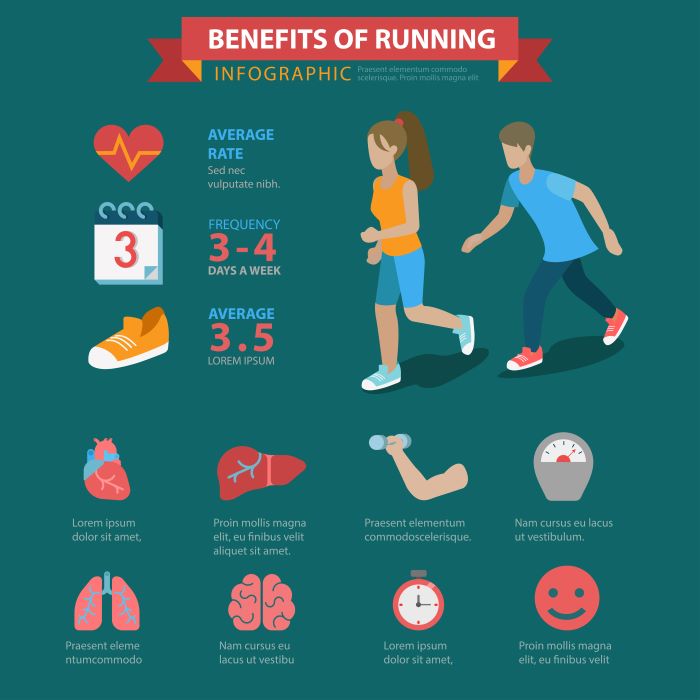To enhance your running performance, understanding the significance of speed training is crucial. Speed training is not merely about running faster; it encompasses a range of techniques designed to improve your overall performance and efficiency. This training helps in developing your muscle strength, cardiovascular endurance, and running economy, which are essential for tackling a 2.4 km run effectively.
Implementing speed training into your routine can yield the following benefits:
- Improved Pace: Regular speed workouts can help you maintain a quicker pace during your runs, allowing you to cover distances like 2.4 km in lesser time.
- Enhanced Endurance: Contrary to common belief, speed work boosts your endurance by teaching your body to efficiently utilize oxygen and energy.
- Injury Prevention: Strengthening your muscles through varied speed training techniques can reduce the risk of injuries, making you a more resilient runner.
Moreover, speed training can keep your workouts exciting and diverse. Incorporating intervals, tempo runs, and hill sprints can break the monotony of standard distance runs while providing a solid foundation for your fitness goals.
To delve deeper into the world of speed training and discover tailored workouts that fit your needs, visit our website to learn more and get started today! Click here.
Essential Warm-Up Exercises to Prepare

Before diving into any speed training routine, incorporating essential warm-up exercises is crucial for optimizing performance and preventing injuries. A well-structured warm-up routine prepares your muscles, enhances blood flow, and increases your heart rate, all of which are vital for a successful run.
Here are some effective warm-up exercises to include:
- Dynamic Stretching: Engage in movements such as leg swings, arm circles, and torso twists. These stretches help in loosening your muscles and joints, preparing them for the intensity ahead.
- High Knees: This exercise elevates your heart rate and warms up your hip flexors. Stand tall and jog in place, bringing your knees up to your chest as high as possible.
- Butt Kicks: Ideal for warming up the hamstrings, butt kicks involve jogging in place while kicking your heels towards your glutes.
- Strides: Incorporating a few short strides of 50-100 meters at a faster pace helps transition your body into the speed work phase smoothly.
Remember, the key to an effective warm-up is to gradually increase your intensity. Spending 10 to 15 minutes on these exercises can significantly enhance your performance during your 2.4 km speed sessions.
Effective Workouts to Increase Speed

To truly understand how to run faster for 2.4, incorporating effective workouts into your training regimen is essential. These workouts focus on building strength, speed, and endurance, ultimately aiding in achieving a better time during your runs.
Here are some proven workouts that can help you increase your speed:
- Interval Training: This involves alternating between high-intensity sprints and recovery periods. For example, sprint for 30 seconds, then jog or walk for 1-2 minutes. Repeat this cycle for 20-30 minutes. Interval training boosts your aerobic capacity and helps your body adapt to faster paces.
- Fartlek Runs: A Swedish term meaning ‘speed play,’ fartlek runs blend continuous running with speed bursts. During a steady run, incorporate short sprints or faster-paced sections to enhance your speed while maintaining a comfortable overall pace.
- Hill Repeats: Find a steep hill and run up it at a hard effort, then walk or jog back down for recovery. Repeat this 4-6 times. Hill workouts build strength and power in your legs, which translates to improved speed on flat surfaces.
- Tempo Runs: These runs help you maintain a challenging but sustainable pace. After warming up, run at a pace you can hold for 20-30 minutes, which is typically a bit faster than your comfortable pace. This helps improve your lactate threshold, allowing you to run faster for longer periods.
Incorporating these workouts into your training plan will not only enhance your speed but also build your confidence as you prepare for your next 2.4 km run.
Nutrition Tips for Optimal Running Performance

Nutrition plays a vital role in achieving your running goals, especially when learning how to run faster for 2.4. Fueling your body with the right nutrients can enhance performance, improve recovery, and sustain energy levels during your workouts.
Here are some essential nutrition tips to optimize your running performance:
- Carbohydrate Loading: Carbohydrates are the primary fuel source for runners. Prior to your runs, especially long ones, incorporate complex carbohydrates like whole grains, fruits, and vegetables into your meals to ensure your glycogen stores are full.
- Hydration: Staying hydrated is crucial for maintaining peak performance. Aim to drink water throughout the day and consider electrolyte-rich beverages during long runs to replenish lost minerals.
- Protein for Recovery: After your workouts, consuming protein is essential for muscle repair. Include sources like lean meats, dairy, or plant-based proteins in your post-run meals to help your muscles recover and grow stronger.
- Healthy Fats: Don’t shy away from healthy fats, as they provide sustained energy for longer runs. Incorporate nuts, seeds, avocados, and olive oil into your diet for a balanced approach.
- Pre-Run Snacks: Eating a light snack 30-60 minutes before running can provide an energy boost. Opt for easily digestible foods, such as bananas, yogurt, or energy bars, to avoid any stomach discomfort during your run.
By focusing on these nutrition strategies, you can enhance your overall running performance, enabling you to tackle the 2.4 km distance with greater speed and efficiency.
Mental Strategies for Boosting Your Confidence

Mental strength is just as important as physical conditioning when it comes to running faster, particularly if you’re wondering how to run faster for 2.4. Confidence can significantly impact your performance, and developing effective mental strategies can help you overcome challenges and enhance your running experience.
Here are some powerful mental strategies to boost your confidence:
- Visualization: Picture yourself achieving your running goals. Spend a few minutes each day imagining yourself completing the 2.4 km run with speed and ease. This mental imagery can create a sense of familiarity, making the actual run feel less daunting.
- Positive Affirmations: Use positive self-talk to reinforce your abilities. Repeating affirmations like “I am strong and capable” can help build your confidence and create a positive mindset before and during your runs.
- Setting Achievable Goals: Break down your main goal into smaller, manageable milestones. Celebrate these small victories to maintain motivation and reinforce your belief in your abilities.
- Mindfulness Techniques: Practice mindfulness and focus on your breathing while running. Staying present helps to reduce anxiety and negative thoughts, allowing you to concentrate on your performance instead of distractions.
- Embracing Challenges: View challenges as opportunities for growth. Instead of fearing tough runs or difficult trails, remind yourself that overcoming obstacles is part of the journey towards becoming a better runner.
By incorporating these mental strategies into your training routine, you can cultivate a stronger sense of confidence that will propel you towards your running goals, helping you achieve that desired speed for the 2.4 km distance.
Tracking Progress and Setting Goals
Tracking your progress and setting specific goals are essential elements in your journey of learning how to run faster for 2.4. These practices not only help you stay focused but also provide motivation to push through challenging workouts.
To effectively monitor your progress, consider the following methods:
- Use a Running App: Many apps allow you to log your runs, track distance, pace, and even monitor your heart rate. This data can help you identify patterns in your performance and areas for improvement.
- Keep a Training Journal: Writing down your workouts, feelings, and how you performed can provide valuable insights into your training journey. Reflecting on these entries can reveal what works best for you.
- Set SMART Goals: Make your goals Specific, Measurable, Achievable, Relevant, and Time-bound. For example, aim to improve your 2.4 km time by a certain number of seconds within the next month.
- Regular Assessments: Schedule regular time trials to assess your progress. Use these assessments to adjust your training plan and set new targets.
Remember, tracking your progress is not just about the numbers; it’s about celebrating your journey and recognizing your growth. By setting clear goals and regularly evaluating your performance, you can stay motivated and maintain a positive mindset.
For more tips on how to enhance your running experience and achieve your fitness goals, visit our website to learn more and get started today! Click here.


